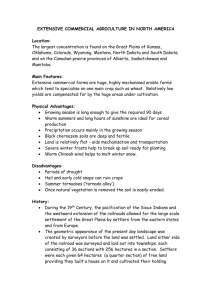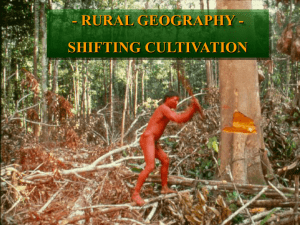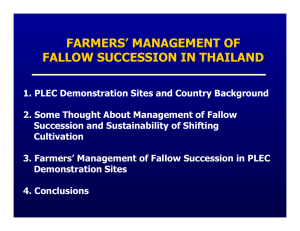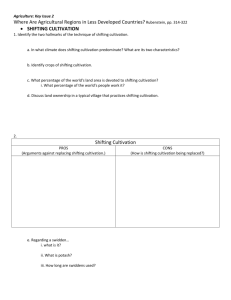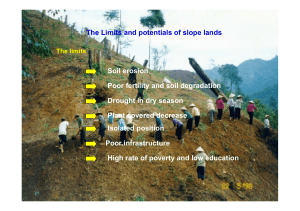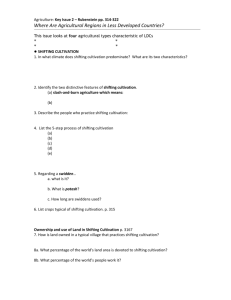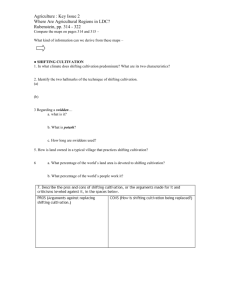Shifting Cultivation Homework
advertisement
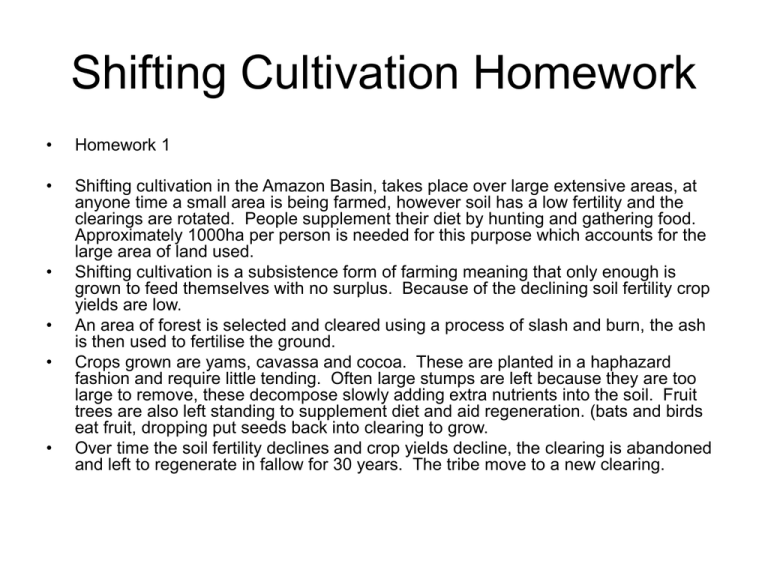
Shifting Cultivation Homework • Homework 1 • Shifting cultivation in the Amazon Basin, takes place over large extensive areas, at anyone time a small area is being farmed, however soil has a low fertility and the clearings are rotated. People supplement their diet by hunting and gathering food. Approximately 1000ha per person is needed for this purpose which accounts for the large area of land used. Shifting cultivation is a subsistence form of farming meaning that only enough is grown to feed themselves with no surplus. Because of the declining soil fertility crop yields are low. An area of forest is selected and cleared using a process of slash and burn, the ash is then used to fertilise the ground. Crops grown are yams, cavassa and cocoa. These are planted in a haphazard fashion and require little tending. Often large stumps are left because they are too large to remove, these decompose slowly adding extra nutrients into the soil. Fruit trees are also left standing to supplement diet and aid regeneration. (bats and birds eat fruit, dropping put seeds back into clearing to grow. Over time the soil fertility declines and crop yields decline, the clearing is abandoned and left to regenerate in fallow for 30 years. The tribe move to a new clearing. • • • • Shifting Cultivation Homework • Fallow periods in the Amazon are being reduced due to population densities increasing. This means there is less land available for shifting cultivation. The have to return to their clearing more often, long before the soils have fully recovered, hence overtime the overall fertility of the soil declines. • Reasons for reduced fallow periods are mainly due to the destruction and development of the rainforest. Large areas of forest have been giving to landless people from the drought NE of Brazil, who farm the land incorrectly and have to clear more land as crop yields decline, they do not regenerate the forest and vast areas are degradated. • Large areas of forest have been flooded to provide dams for HEP. • Logging for hardwoods like mahogany and rosewood for export, leave vast areas of the forest destroyed. • You could also mention; Roads, mining, cattle ranching and plantations etc.

